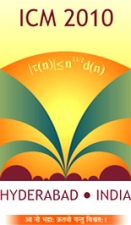DVD show of the ballet Lilavati
Show times:
‘LILAVATI is a dance production based on the Bharatanatyam dance form, with elements from yoga movements. It is part of the early group choreography created by Chandralekha in her quest for seeking a new and non-mythological content for Bharatanatyam which, later on, became the foundation for the creation of a full-fledged contemporary Indian dance by her.’
LILAVATI – Traditions of Natya, Kavya, Ganita – 1989
An interpretation, through dance music and poetry, of the celebrated Indian text on mathematics by Bhaskaracharya.
Conceived and Choreographed by CHANDRALEKHA
Bhaskara’s questions, addressed to his little daughter Lilavati (‘Ae baale Lilavati’), constitute the creative peak of Indian mathematics in a series of elegant problems in arithmetic, algebra, and geometry – a sheer romance of abstract numerical equations seen in relation to the fantasy and imagination in the life and mind of a little girl; a classic attempt at transforming learning into a joyous and creative activity linked to our environment.
Lilavati, the text, belongs to a period following Natya Shastra and suggests the organic connection between natya, kavya, ganita.
Bhaskara’s questions reveal a world of that time – nature and environment of that time, flora and fauna of that time, prices of that time – prices of dal and ghee and salt, prices of gold and diamonds, rubies, emeralds, pearls.
What we see in the text Lilavati is a little girl at play, a mathematician at play, their mutual perception of cosmos at play. Rhythmically linking these is the constant of pure numbers.
Lilavati, the dance is a homage to the Indian genius for connection-making, to the infusion of poetics and playfulness in the understanding of unrelated and abstract numbers.
The dance production in the Bharatanatyam style, had a successful stage run at prestigious venues and festivals through 1989-92 – including at the ‘Acharya Varahamihira National Seminar on Ancient Indian Mathematics’ (Ujjain, 1990).
In 1990, the originally 90 minutes long performance with five questions from Lilavati was abridged to a 58 minutes edition with four questions and specially conceived for Doordarshan’s ‘National Programme of Dance’. This version is telecast on Doordarshan even to this day and is now available on DVD.

CHANDRALEKHA – [1928 - 2006]
————————
IT WAS with Angika (1985) that Chandralekha proclaimed the need for reintegrating the diverse Indian physical traditions and exploring new and contemporary directions for dance in India. Almost twenty-five years later today, after ten full-length productions, several shorter works, scores of lecture-demonstrations, workshops and collaborations in India and abroad, Chandralekha’s body of work has emerged as the yardstick by which new and contemporary dance from India is being measured.
After Angika, Chandralekha’s productions like Lilavati, Prana, Sri, Yantra, Mahakal, Raga, Sloka and Sharira are classic examples of how Indian dance can be modern on its own terms without borrowing from the West.
The Chennai-based dancer/choreographer, also noted for her contributions as a creative writer and designer, trained in the early 1950s with the famed Bharatanatyam teacher and nattuvanar Guru Kancheepuram Ellappa Pillai. She soon achieved critical acclaim in the dance style known for its musicality and intensity of abhinaya in a lineage that had also spawned that extraordinary artist, Balasaraswati.
During a glittering decade-long career, Chandralekha was among the leading soloists of her time and performed at some of the most coveted venues in India and abroad, besides being a select member of the first ever Indian artists’ delegation to the USSR and China in the 1950s. However, by the early 1960s, she moved away from the performing scene rejecting the sublimated content of the classical form as well as its commercial and market entertainment values.
Chandralekha worked with integrating the structures and internal strengths of classical forms like Bharatanatyam, martial forms like Kalarippayattu, therapeutic forms like Yoga and symbolic ritual forms like ‘hasta-mudras’, in order to comprehend and interpret the body in a modern sense. Her work expresses a basic wonder at the complexity of the body, which is the repository of both, poetry and power.
Chandralekha’s legendary status in India is a result, on the one hand, of her having opened out space for ‘contemporary dance’ in the Indian context and, on the other, of her having been presented at some of the most prestigious venues in the world – including Tokyo, Hamburg, Avignon, Berlin, Copenhagen, Jakarta, Brooklyn, Sao Paolo, Salzburg, Taipei and Chicago.
A major book on her and her work, Chandralekha: Woman, Dance, Resistance by Rustom Bharucha, was published in 1995. In 2004, Ananya Chatterjea wrote Butting Out, another important book on her work. Her own poetic work Rainbow On The Roadside was published by Earthworm Books, Chennai in 2001. Her other published visual books with poetic text include, Fire-Counterfire and One More News. She was also a prominent graphic designer with a large number of feminist and art posters to her credit.
Chandralekha won numerous awards including the ‘Legends of India – Lifetime Achievement Award’ (2006), the Sangeet Natak Akademi ‘Fellowship’ award (’Akademi Ratna’-2005), Kalidas Samman (2004), the Sangeet Natak Akademi award (1992) as well as the International Time-Out/Dance Umbrella award in U.K. (1991) and the Gaia award for ‘cultural ecology’ in Italy (1990).
Chandralekha’s aesthetic questions the reduction of the body to merely something pretty or ornamental or decorative. She celebrates the intense play between the subtle and the manifest body and its expression through purity of line and the extension and dilation of the energy field in principles like slowness, control, balance, lightness. Her last few productions focused on a complex idea of ‘femininity’. Her central premise remains, of the essential unity of the body and, within it, the indivisibility of sexuality, sensuality and spirituality.




